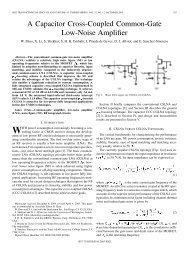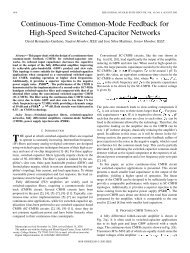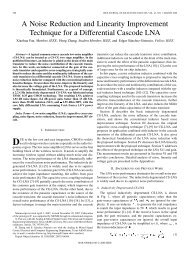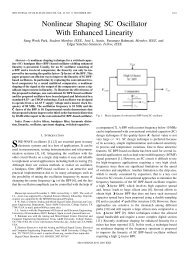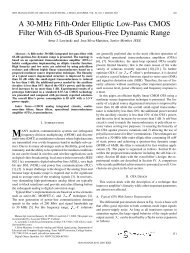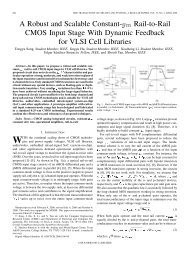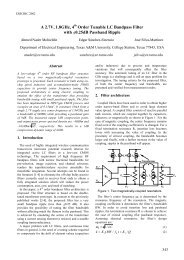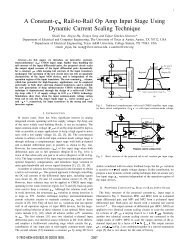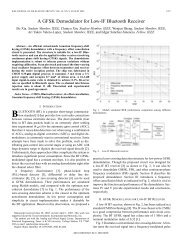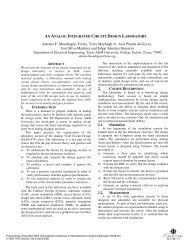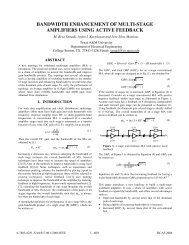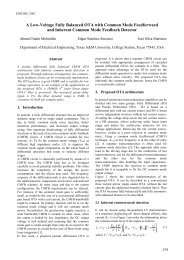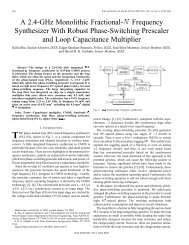A Rail-to-Rail Amplifier Input Stage - Analog and Mixed Signal ...
A Rail-to-Rail Amplifier Input Stage - Analog and Mixed Signal ...
A Rail-to-Rail Amplifier Input Stage - Analog and Mixed Signal ...
Create successful ePaper yourself
Turn your PDF publications into a flip-book with our unique Google optimized e-Paper software.
FISCHER et al.: RAIL-TO-RAIL AMPLIFIER INPUT STAGE 281Fig. 20. Output spectrum of the amplifier in the voltage follower configuration for V =1:4sin21000t. SFDR = 70 dB.Fig. 21. Time-domain waveform corresponding <strong>to</strong> the spectrum in Fig. 20.shifted <strong>to</strong> a constant value before the signal is input <strong>to</strong> the differentialpair. Since the common-mode level of the differentialpair is fixed, consistent operation for rail-<strong>to</strong>-rail common-modeinputs is achieved. Furthermore, since only one differential pairwas used, there is no degradation in the CMRR for any inputcommon-mode levels, which is a problem for rail-<strong>to</strong>-rail architecturesthat use complimentary input differential pairs. Experimentalmeasurements of this amplifier showed only 0.35deviation in the input stage transconductance, whereas the bestpreviously reported was .REFERENCES[1] F. You, S. H. K. Embabi, <strong>and</strong> E. Sánchez-Sinencio, “Low-voltage classAB buffers with quiescent current control,” IEEE J. Solid-State Circuits,vol. 33, no. 6, pp. 915–920, Jun. 1998.[2] T. W. Fischer <strong>and</strong> A. I. Karsilayan, “<strong>Rail</strong>-<strong>to</strong>-rail amplifier input stagewith constant g <strong>and</strong> common-mode elimination,” Electron. Lett., vol.38, no. 24, pp. 1491–1492, Nov. 2002.[3] M. Wang, T. L. Mayhugh, S. H. K. Embabi, <strong>and</strong> E. Sánchez-Sinencio,“Constant- g rail-<strong>to</strong>-rail CMOS Op-amp input stage with overlappedtransition regions,” IEEE J. Solid-State Circuits, vol. 34, no. 2, pp.148–156, Feb. 1999.



